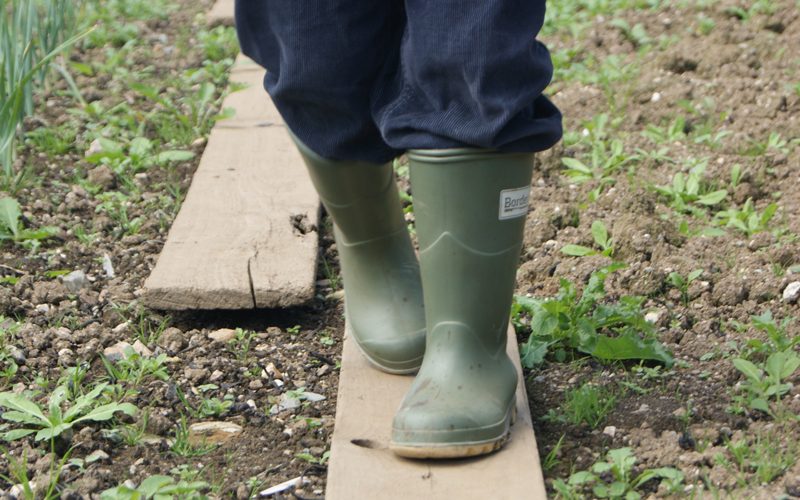Here are a few helpful ideas that you may want to consider if you’re growing your own this winter, or if you want to get on top of things a bit before spring.
Projects:
1. Build raised beds & fruit cages/supports
It’s not a bad idea to make a start on this nice and early on in the year so that things are ready by spring so that you can turn your attention to planting and topping up the soil with compost etc.
2. Get hold of woodchip & manure
It’s a good time of year to speak to local tree surgeons and farmers to see if you can get hold of a pile of woodchip for pathways, mulching and composting, or to get hold of well-rotted manure to dig into the soil.
3. Pruning & cutting back
The winter months are useful for pruning various soft fruits – see our guide – and for cutting back plants in borders and herb beds. It’s also a great time to pull up brambles and nettles and other more invasive weeds that often creep in. Getting things cleared now means that when spring comes you can just crack on and plant without losing time to digging and weeding.
4. Install water butts
If you’d like to save on water next year, then getting a couple of water butts up and running is a great idea. It’s usually fairly straightforward, too, and involves attaching a diverter between the downpipe from the roof gutter and the water butt. For this, you will normally need a hacksaw to cut through the downpipe, and a drill to make a hole in the water butt itself (you’ll then feed the diverter hose through this hole.) Don’t forget to put the waterbutt on a sturdy stand, high enough that you can get your watering can underneath the tap!
You tend to find some good options in garden centres and online, so once you know where you’ll be placing it (perhaps from a garden shed or outbuilding, or your own home), you can choose a suitable size/shape for that area.
5. Start a compost system
If you have space for a compost bin or ideally 2 or 3, then it is a really good idea to start a compost system. We have a guide you can use to get started. At the simplest level, you can buy a compost bin from a garden centre and use that. If you feel a bit of DIY coming along, then you can easily build square compost bays from old pallets or timber. Having more than one allows you to have one bin ‘on the go’ (the one that you are topping up,) one bin full and busy composting away, and one bin full of compost that is ready to use.
Tips:
- Use a wooden plank as a path on wet soil to prevent overly compacting it while it is waterlogged.
- Raise outdoor pots off soggy ground if you can, by standing them on a pallet or moving them onto gravel so that they can drain more freely in wet weather.
- Dig water channels for areas prone to waterlogging, and you can also prod into the soil of beds with a garden fork to help heavy rain find a way to soak deeper rather than clogging up the surface of the soil.
- If you plan to grow potatoes, choose a bed and cover with block polythene or similar to start protecting the soil from cold weather and to help the soil warm faster when it comes closer to planting time.
- If you haven’t already dug in well-rotted manure or compost to empty beds, now is the time to do it ahead of spring so that it can start working into the soil.
- Make sure greenhouses/polytunnels/cold frames are washed to let as much light in as possible during the short daylight hours of winter if you’re growing winter crops.

